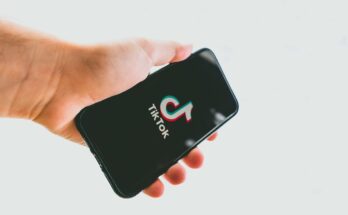ZonaJakarta – If you’ve ever posted a dance video, a photo carousel, or a 10-minute explainer and thought, “I should be getting paid for this,”—you’re not alone.
In 2025, content creation isn’t just a hobby—it’s a career. From Gen Z side hustlers to full-time influencers, everyone’s chasing those views and, more importantly, that income. But here’s the million-follower question: Which platform actually gives you the best shot at earning money—YouTube, Instagram, or TikTok?
Let’s break down the pros, cons, and earning power of each platform so you can figure out where your content hustle belongs.
YouTube: The Long Game with Big Payouts
The breakdown:
YouTube is the OG of content monetization. With long-form videos, ad revenue sharing, and a well-established Partner Program, it’s still the top dog when it comes to direct payouts.
How you earn:
- Ad revenue through YouTube Partner Program
- Channel memberships & Super Chats
- Brand sponsorships
- Merch shelf integration
- YouTube Shorts Fund & Shorts ad revenue
Pros:
1. Highest CPM (cost per 1,000 views) in most regions
2. Reliable income from ads
3. Long-term content visibility (videos keep earning for years)
4. Ideal for educational, entertainment, or storytelling content
Cons:
1. Harder to grow fast without niche or viral strategy
2. Long-form editing takes time
3. Monetization threshold: 500 subscribers & 3,000 watch hours (for basic monetization)
Best for:
Creators with deep content (tutorials, reviews, storytelling, educational videos) and long-term goals.
Instagram: The Visual Powerhouse with Brand Potential
The breakdown:
Instagram has evolved from just a photo-sharing app to a hybrid of Reels, Stories, Shops, and more. While ad revenue sharing isn’t its strong suit yet, it’s a goldmine for brand deals and affiliate marketing.
How you earn:
- Sponsored posts and brand partnerships
- Affiliate marketing
- Instagram Subscriptions (monthly supporter income)
- Bonuses via Reels Play (select creators)
- Product tagging and shopping integration
Pros:
1. High brand sponsorship rates
2. Multiple formats: Stories, Reels, Lives, Posts
3. Visual-first = great for fashion, travel, lifestyle
4. Direct shopping tools for influencers with products
Cons:
1. Lower organic reach than TikTok or YouTube
2. Limited direct ad revenue for creators
3. Reliant on engagement metrics (likes, saves, comments)
Best for:
Lifestyle influencers, product reviewers, fashion creators, and anyone great at visuals + branding.
TikTok: The Viral Playground with Quick Growth
The breakdown:
TikTok’s short-form, trend-based model makes it easier to go viral—but does that translate to income? Yes… and no. Monetization is improving in 2025, but it still leans heavily on brand partnerships and external income streams.
How you earn:
- Creator Fund (now evolved into Creator Rewards Program)
- Ad revenue from TikTok Pulse (top-performing content)
- Sponsored content and brand deals
- Live gifts & in-app coins
- Affiliate links and external promos
Pros:
1. Fastest platform for viral growth
2. Low barrier to entry—anyone can start
3. Massive Gen Z and millennial audience
4. Trends = easier content ideas and discovery
Cons:
1. Lower average payouts per view
2. Viral content fades fast
3. You’re at the mercy of algorithm trends
4. Still growing its monetization infrastructure
Best for:
Entertainers, dancers, comedians, relatable creators, and anyone who thrives on fast, fun content.
So… Which One Is Better for Making Money?
When it comes to choosing the best platform for monetization, each has its own edge depending on your content style and goals.
YouTube is ideal for creators who focus on long-form or evergreen content, such as tutorials, reviews, or storytelling. Its monetization strength is the highest and most consistent, thanks to ad revenue, memberships, and other income streams. While the growth might be slower compared to TikTok, it tends to be steady and more sustainable over time.
Instagram, on the other hand, shines in the world of brand deals and lifestyle content. It’s particularly popular among fashion influencers, travel bloggers, and product reviewers. Although it doesn’t offer as much in direct ad payouts, its strength lies in brand-heavy monetization strategies. Growth is moderate, but with a strong aesthetic and engagement, creators can carve out a profitable niche.
TikTok is the king of viral content and rapid audience growth. It’s best suited for short-form, trend-based creators like entertainers, dancers, or comedians. While it offers quick exposure, its monetization is still catching up—it can be fast, but often inconsistent. Success here depends heavily on riding trends and keeping content fresh.
In short: YouTube is best for long-term stability, Instagram wins for brand-driven income, and TikTok offers the fastest road to fame—but may require extra effort to turn views into steady cash.
The Bottom Line: Play to Your Strengths
There’s no one-size-fits-all answer. The best platform to monetize content depends on your content style, your audience, and how you want to make money.
Want stable, long-term income? YouTube’s your move.
Love working with brands and being camera-ready? Instagram wins.
Want to grow quickly and hop on trends? TikTok’s calling your name.
Many successful creators use all three—cross-posting content and diversifying income streams. The key is to start somewhere, stay consistent, and learn what works best for you. (*)




